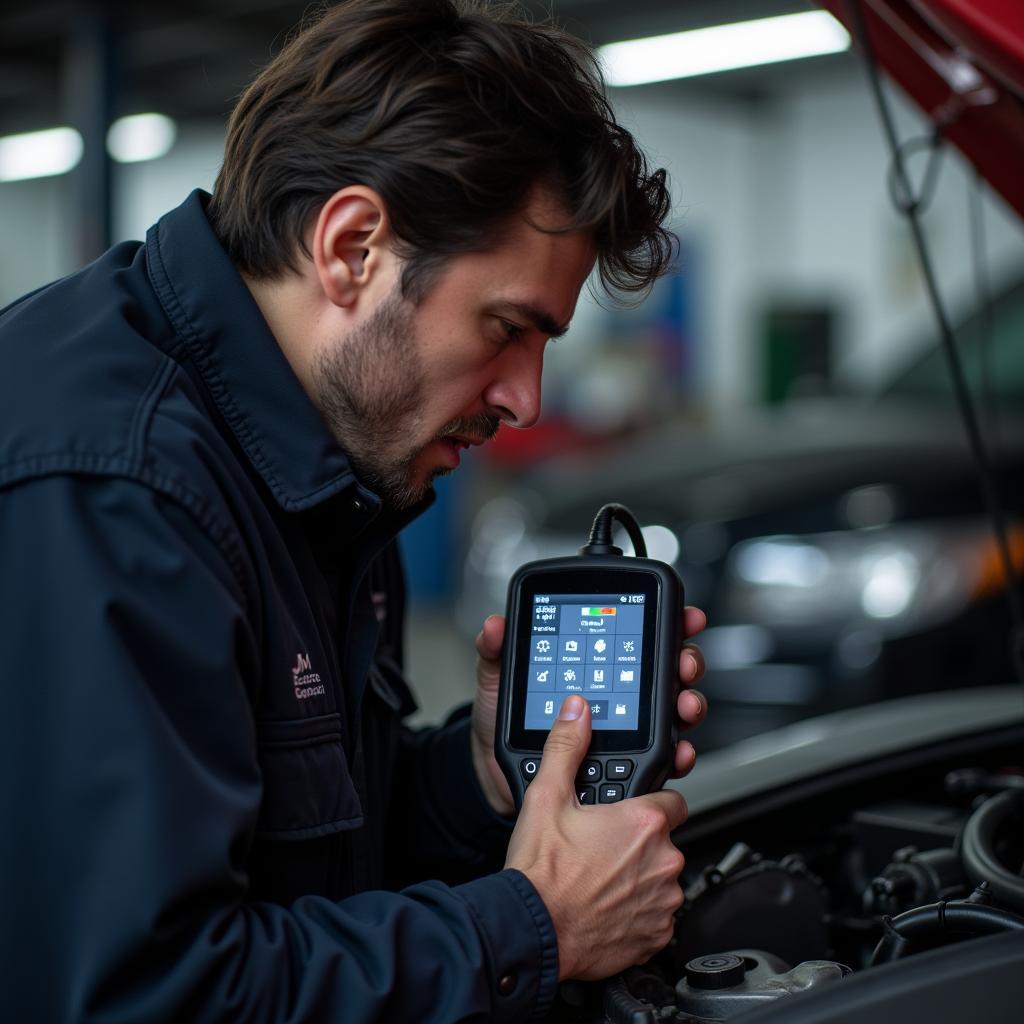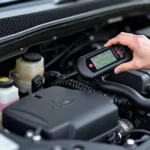The Check Engine Light, often also referred to as the Malfunction Indicator Lamp, is a dreaded sight for any car owner. If it illuminates, it signals a problem in the exhaust system or engine control. But don’t panic! In this article, we will cover the most common causes for an illuminated Check Engine Light and show you how you can quickly and efficiently address the issue.
What Does the Check Engine Light Mean?
The Check Engine Light indicates that your vehicle can no longer maintain emission values within the specified limits. This can have various causes, from a faulty sensor to a more serious problem in engine management. Modern vehicles are equipped with a variety of sensors that constantly monitor emission values and adjust engine control. If one of these sensors reports an error or values outside the target range, the Check Engine Light illuminates.
Common Causes for an Illuminated Check Engine Light
- Faulty Oxygen Sensor: The oxygen sensor measures the oxygen content in the exhaust gas and plays a crucial role in achieving the optimal air-fuel mixture. A faulty oxygen sensor leads to an incorrect air-fuel mixture, which in turn negatively affects emission values and causes the light to illuminate.
- Faulty Catalytic Converter: The catalytic converter filters harmful pollutants from the exhaust gas. If it is faulty, these pollutants can no longer be sufficiently cleaned, leading to increased environmental pollution and the illumination of the Check Engine Light.
- Misfires: Misfires lead to incomplete combustion of fuel, which in turn worsens emission values.
- Incorrect Fuel: Filling up with the wrong fuel, such as gasoline instead of diesel, can also trigger the Check Engine Light and lead to severe engine damage.
- Intake System Leaks: Leaks in the intake system, for instance, in hoses or gaskets, lead to unmetered air being supplied to the engine. This disrupts the air-fuel mixture and can also activate the Check Engine Light.
 Mechanic examining car engine with diagnostic scanner
Mechanic examining car engine with diagnostic scanner
What to Do When the Check Engine Light Comes On?
If the Check Engine Light illuminates, you should first stay calm. It’s not always a serious problem. However, it is advisable to have the cause checked by a professional workshop as soon as possible.
- Diagnostic Scan: Modern vehicles have On-Board Diagnostics (OBD), which allows reading the fault memory.
- Addressing the Cause: Based on the trouble code, the workshop can identify and fix the cause of the illuminated Check Engine Light.
- Professional Help: Do not ignore the Check Engine Light, as this can lead to consequential damage to the engine and high repair costs.
Preventing the Check Engine Light from Illuminating
- Regular Maintenance: Regular maintenance of your vehicle, including the replacement of spark plugs, air filter, and fuel filter, contributes to preventing problems in the exhaust system.
- Quality Fuel: Always use high-quality fuel to extend the lifespan of your engine and exhaust system.
- Driving Habits: Avoid short trips and, if possible, let the engine warm up to prevent condensation build-up in the exhaust system.
Conclusion
The illuminated Check Engine Light is a warning signal that should be taken seriously. Do not ignore it, but visit a professional workshop to determine and fix the cause of the problem. With regular maintenance and careful driving, you can help prevent the Check Engine Light from ever coming on.
More Questions About Your Check Engine Light?
- What does it cost to repair a faulty oxygen sensor?
- Can I continue driving despite the Check Engine Light being on?
- What can be the consequences of a faulty catalytic converter?
Visit our website autorepairaid.com for more helpful information about car repair and troubleshooting. Our experts are available at any time to answer your questions.
